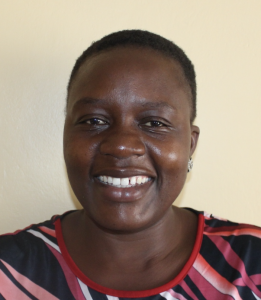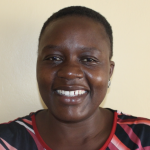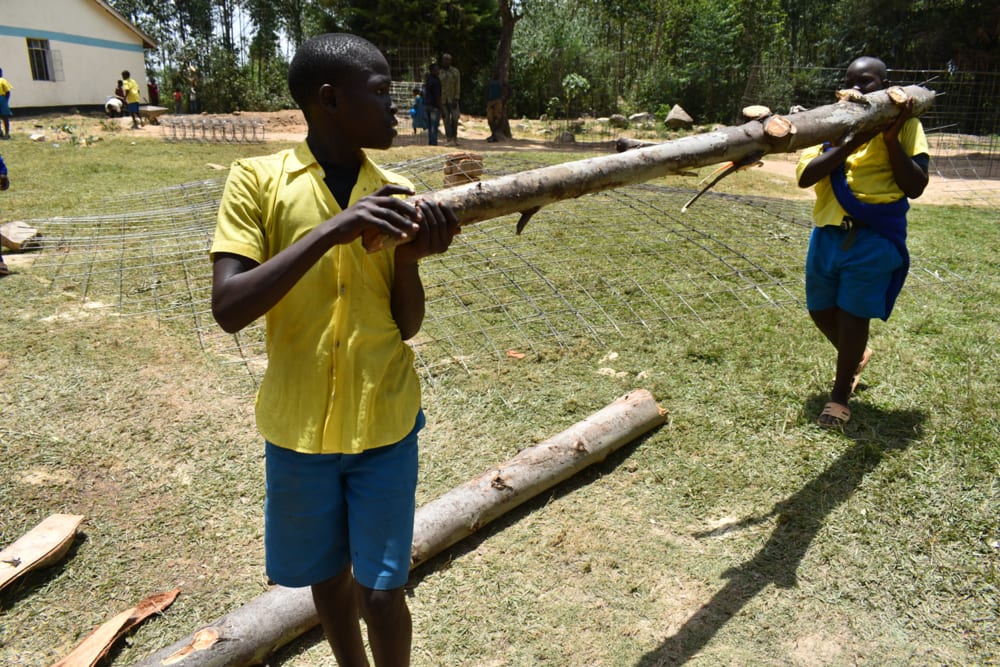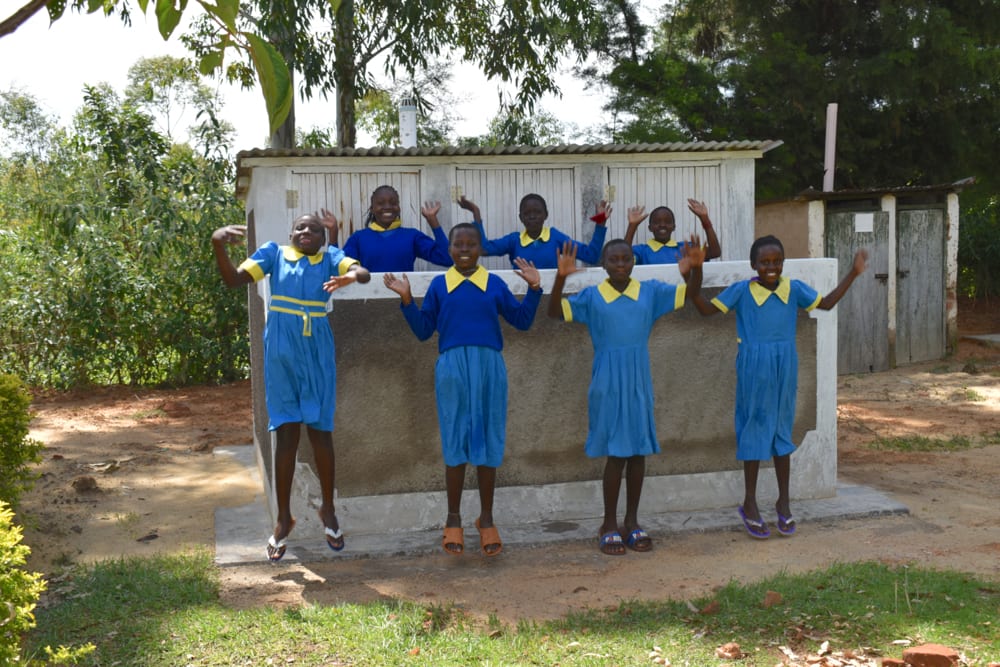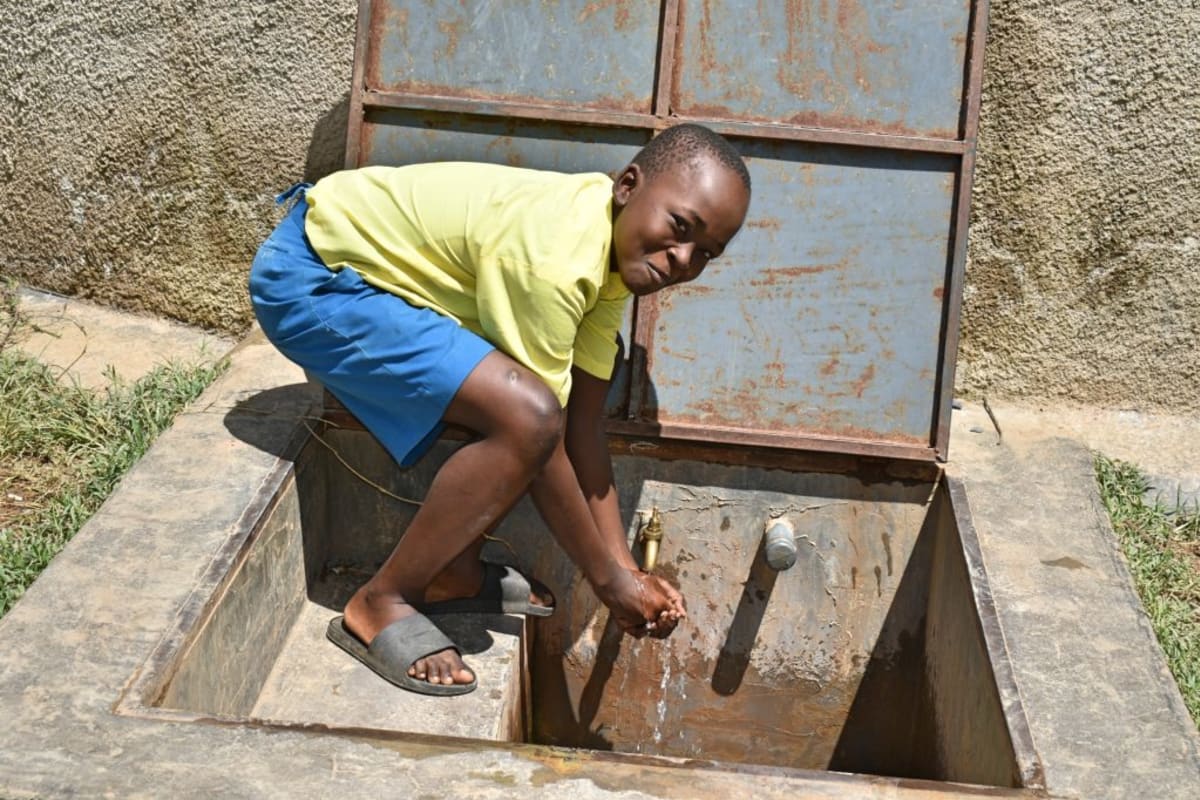"My name is Ivy and I am in Class 7. Our worst challenge is when we have no water in school. We need to balance between studying and bringing water. I am going to Class 8 next year and my dream would be to have clean water so that I get enough time to study. Thanks for remembering our school," said a smiling and hopeful Ivy.
Ivy is just 1 of 411 students and 13 teachers and staff at Shikomoli Primary School who rarely have access to clean water at school. With the school possessing just 1 small, plastic rain tank with only 5,000-liters capacity, the norm at Shikomoli is to have students carry water from home. Every student is checked at the school gate for a container of water, which pupils have to carry along with their books up the hill to the school grounds.
This burdens students on their walk to school, slowing them down and often causing them to miss their morning preps and first lessons. On days of high water demand or when the school has other social events, pupils are sent back out during lunchtime to collect more water. Inevitably, they come back late and miss some of their afternoon lessons too. Each trip is tiring and time-consuming for students, who arrive to class already tired and unfocused. The impact of the water crisis on students' academic performance here is noticeable.
"Lack of water in the school has led to a lot of time-wasting as the pupils have to walk uphill with a water container and books. This waste of time has resulted in poor performance in our school. We believe with improved water supply in the school, there will be improved performance in the national examinations," Head Teacher Mr. Bethuel Burmen said.
The school does have a LifeStaw filter, but on the days when pupils have to fetch water from unknown sources that are not safe for drinking, not all water makes its way through the filter before use. This causes stomachaches and diarrhea throughout the student body since the students' water is the sole source for all cooking, drinking, and cleaning needs for the entire school population. Waterborne illnesses further take pupils out of class while they seek treatment.
The school does take steps to manage their hygiene and sanitation, but they are kept from reaching their full potential by the lack of water. Classrooms and latrines are minimally cleaned, and there is just 1 handwashing station that is not always full. This contributes to the cycle of fecal-oral disease transmission, cases of student illnesses, and absenteeism.
What We Can Do:
Rain Tank
A 75,000-liter rainwater catchment tank will help alleviate the water crisis at this school. The school will help collect the needed construction materials such as sand, bricks, rocks, and water for mixing cement. We will complement their materials by providing an expert team of artisans, tools, hardware, and the guttering system. Once finished, this tank will begin catching rainfall that will be used by the school’s students and staff for drinking, handwashing, cooking, cleaning, and much more.
We and the school strongly believe that all of these components will work together to improve standards at this school, which will help lead to better student academic performance and will help to unlock the potential for these students to live better, healthier lives.
Handwashing Stations
The student health club will oversee the 2 new handwashing stations we will provide, and make sure they are kept clean and in working condition. The club leaders will fill the handwashing stations with water daily and make sure they are always supplied with a cleaning agent such as soap or ash.
VIP Latrines
2 triple-door latrine blocks will be constructed with local materials that the school will help gather. 3 doors will serve the girls while the other 3 will serve the boys. All of these new latrines will have cement floors that are designed to be easy to use and to clean. And with a rain tank right on school property, there should be enough water to keep them clean.
Training on Health, Hygiene, COVID-19, and More
We will hold a 1-day intensive training session with students, teachers, and parents. This training will cover a wide range of topics including COVID-19 symptoms, transmission routes, and prevention; personal and environmental hygiene; and the operation and maintenance of the rain tank, latrines, and handwashing stations. There will be a special emphasis on handwashing.
Our team of facilitators will use a variety of methods to train, including participatory hygiene and sanitation transformation, and asset-based community development. We will initiate a student health club, which will prepare students to lead other pupils into healthy habits at school and at home. We will also lead lectures, group discussions, and provide illustrative handouts to teach health topics and ways to promote good hygiene practices within the school including handwashing and water treatment. We will then conduct a series of follow-up trainings before transitioning to our regularly scheduled support visits throughout the year.

 Rainwater Catchment
Rainwater Catchment
 Rehabilitation Project
Rehabilitation Project












